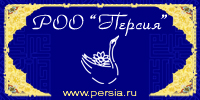
Summary
‘Ladakh’, a picture story by Lev Viktorov, opens this issue.
Writings
- Aleksandr Kadyrbaev. The Keys to the Gates of Asia. The article relates the story of growing Russian influence in the Kazakh steppe. The loyalty oath of Khan Abulkhair to Russian Empress Elizaveta Petrovna, given in 1742, became one of the important milestones of this process.
- Forgotten Diaries of Ivan Neplyuev, Governor of Orenburg. Fragments of a manuscript from the collection of the Russian State Library, which narrates the story of negotiations between Ivan Neplyuev and Abulkhair-khan.
- Mikhail Vol’pe. Biblical Land as Viewed by an Artist. The Russian State Library holds several editions of the albums by British artist David Roberts
(1796–1864). Our magazine presents a number of drawings made by the artist during his voyage to Palestine and Syria. For the first time, we publish extensive fragments of David Roberts’ diaries of this voyage.
The Land of Orient
- Laura Yerekesheva. Red Purses on Mandarin Tree. The author frequently witnessed the celebration of the Chinese New Year, or the Spring Festival (chunjie). She studies the rich and enduring traditions, and the role of religious beliefs in the daily life of people in the Guangdong Province.
- Yelena Tutatchikova. Poster Beauties. Women are nearly always present on the Japanese posters of 1920—30es. What were the artists’ reasons for turning to these images, and how did they look like, these Japanese poster beauties — such are the topics of the author’s reflections.
- Makka Albogachieva. Hajj as Seen by an Ethnographer. Every year, hundreds of thousands of Moslems undertake pilgrimage to Makkah, fulfilling one of their five fundamental duties. The article describes in detail this religious rite, explaining also the meaning and origin of the performed rituals.
- Svetlana Ryzhakova. Eliminating the Horror of Death. The article relates about kalbeliya, the small people of Rajasthan, one of the States of India. Having visited several settlements of kalbeliya, who are renowned for the art of snake catching and serpent-charming, the author made sure that, in recent years, these people became no less renowned for the original art of their female dancers.
- Aleksey Krol. Photographic Memory. Flinders Petrie
(1853–1942), British Egyptologist, was the first scholar who started using photography as an important part of archaeological documentation. His vast photographic archive, which came to rest in the National Museum of Sudan and just lay there for many decades, attracted attention of Russian researcher. - Yana Chekhanovets. The Doors of Jerusalem. In Old Jerusalem, the Hebrews, Moslems, and Christians live side to side. And although their Medieval houses look like one another, the decorations of entrance doors are different, depending on the religion of the house dwellers.
- Ol’ga Makarova. Discovery of the Mysterious Country. Due to Japan’s participation in the World Exhibitions, which started in 1867, the public in Europe and America became acquainted with the Japanese crafts and arts. At the same time, the Japanese could think over their experience and create a concept of national art.
- Sergey Smorodkin. The Eversman’s Staff. The story focuses of the fates of two researchers who studied the antiquities of Central Asia, Eduard Eversman and Sergey Yurenev. They are separated by a century, but united by the passion of studying the culture of the East.
- Asya Petrichenko. The Image of Khanty Land. An essay about the creative works of Nadezhda Vyalova, an original artist. Her paper compositions carry the images of the national culture of khanty, one of the small peoples of Russia.
- Nadezhda Ageeva. The Gift of the Heaven. In Ancient China, music was a mighty ideological weapon, and a special government institution was responsible for its development. The Chinese believed that music can be moral, passion-soothing and arousing noble feelings, as well as immoral and encouraging loose conduct.
- Ol’ga Al Kattan. Of the Hard Woman’s Lot. The scenes of a modern woman’s life in the Arabic Middle East, where century-old traditions successfully resist the pressure of European customs.
- Viktor Solkin. The Heart is Pacified in Abydos. In Egypt, there are still places laying off the tourist paths, which had preserved untouchable the traces of spiritual experience of mankind. One of such places is the ghost town of Abydos. According to the beliefs of Ancient Egyptians, here, in the burial place of the Osiris himself, the gates to the other world.
Our ‘Orientnet’ column reviews Internet-resources on the development of European sports in Asian and African countries.






